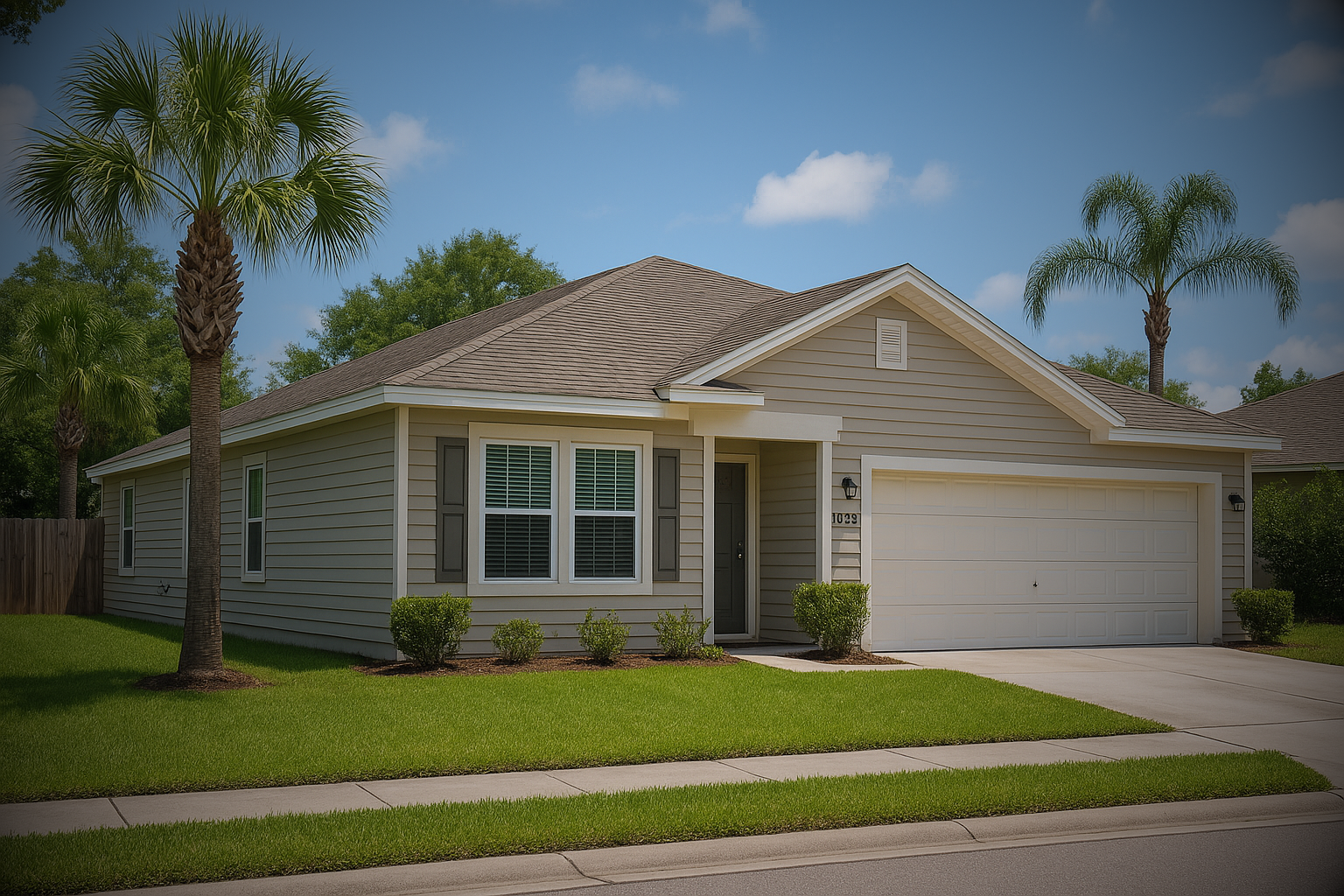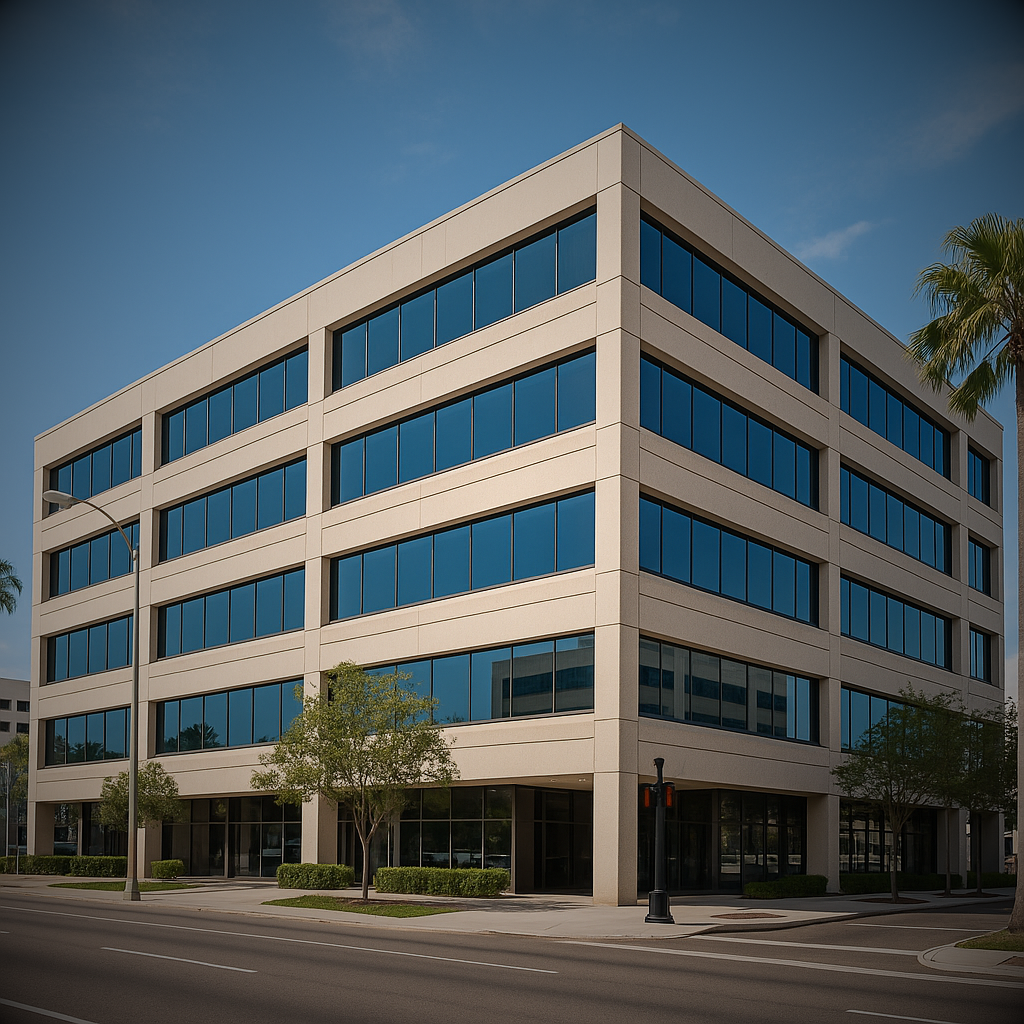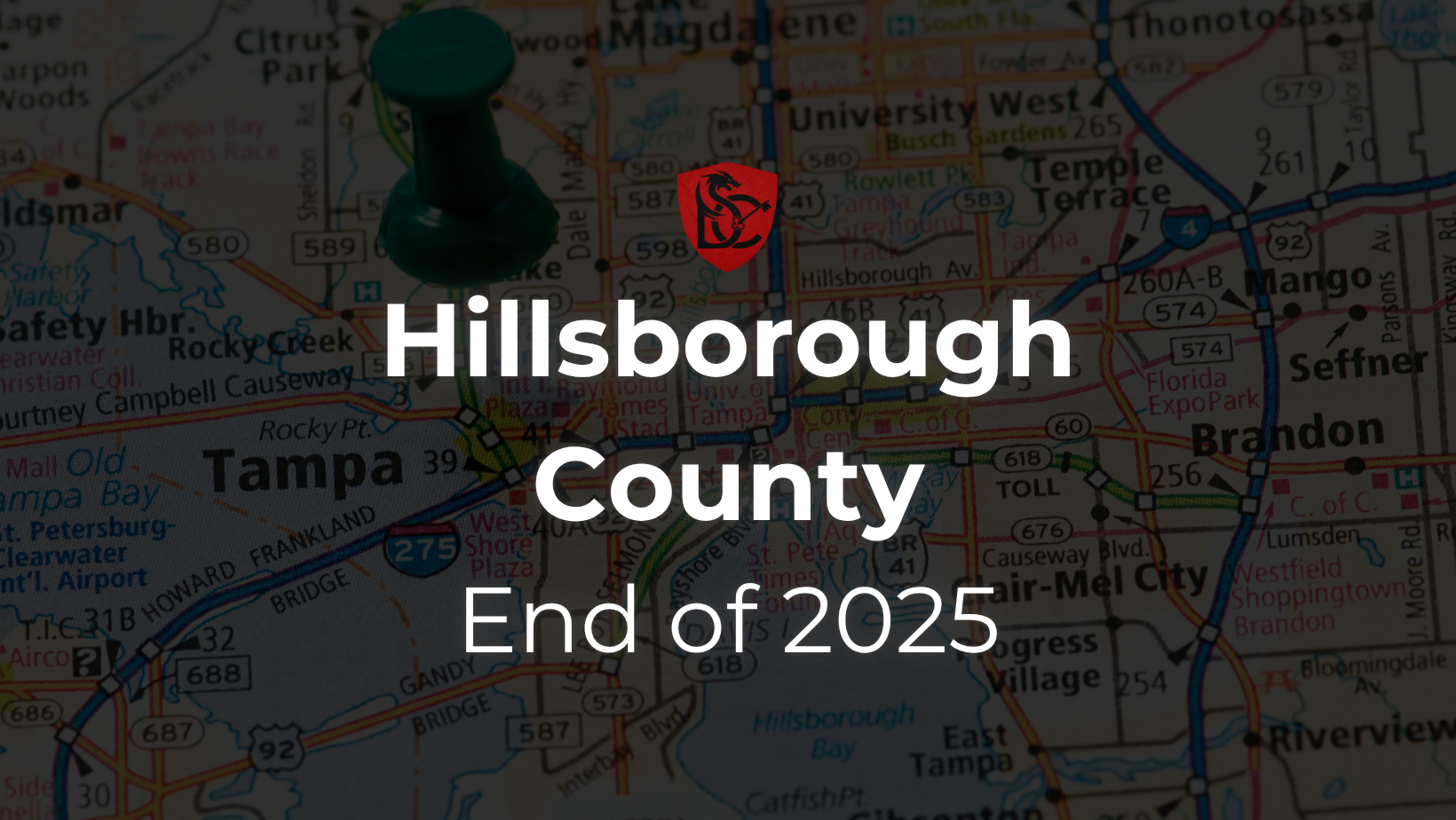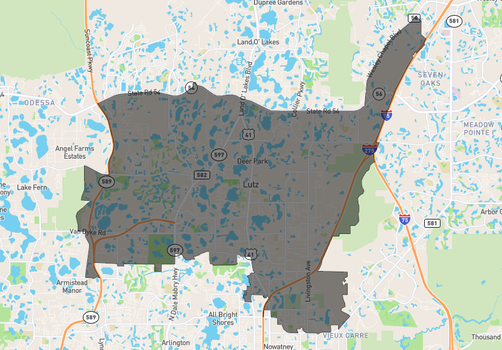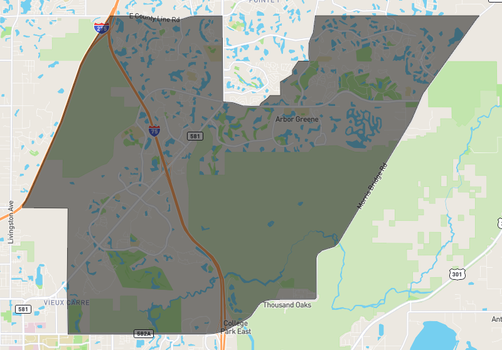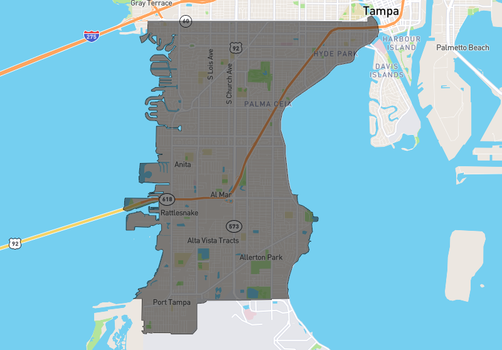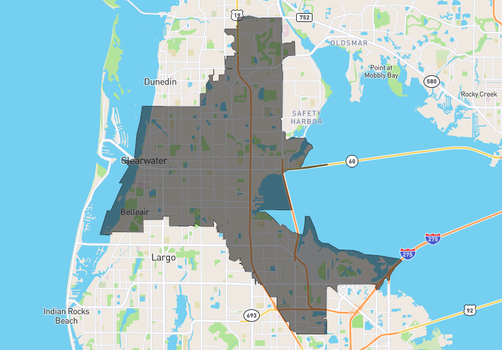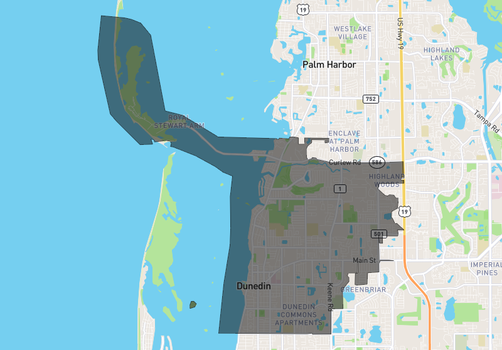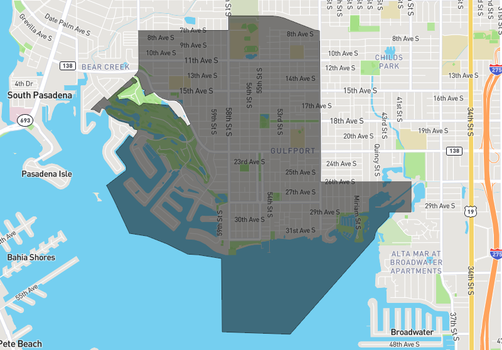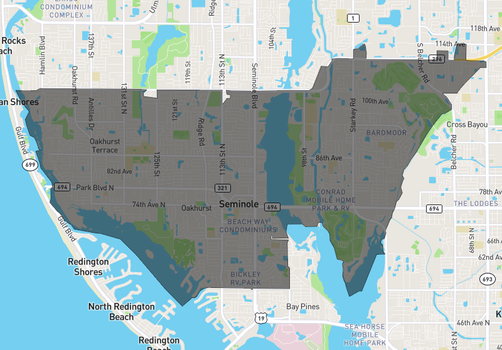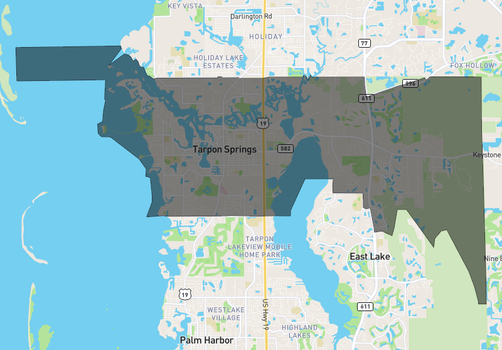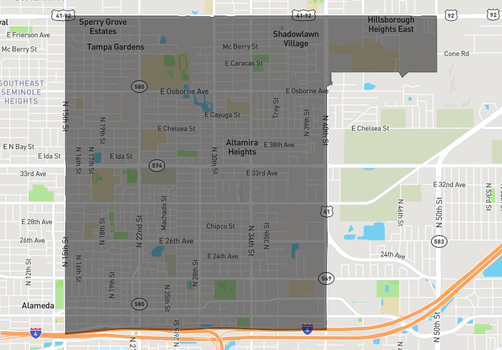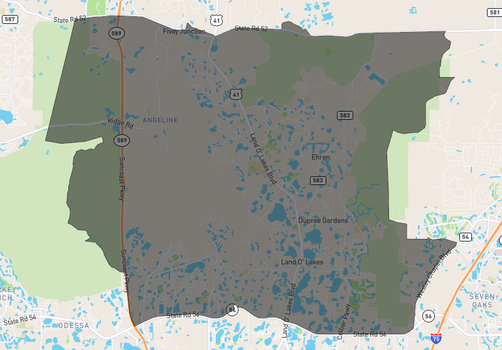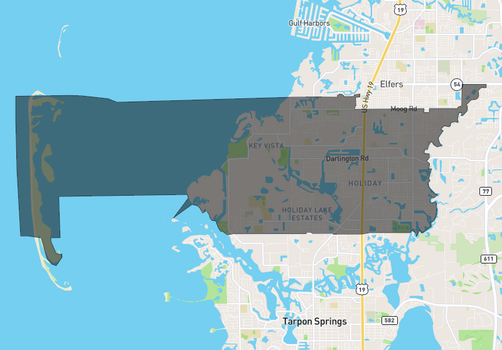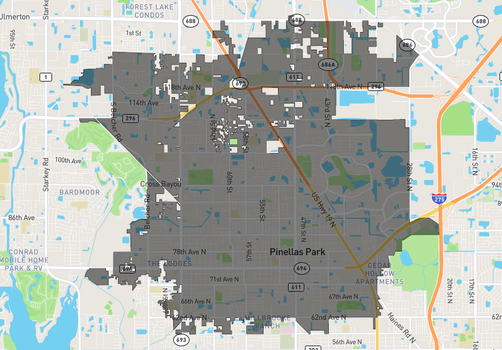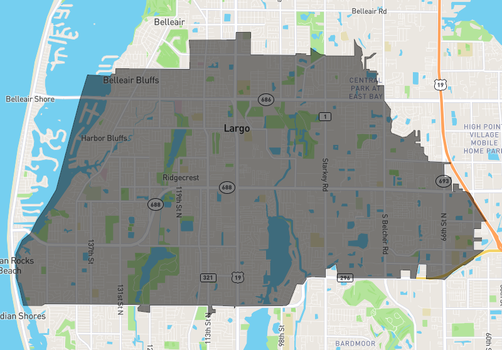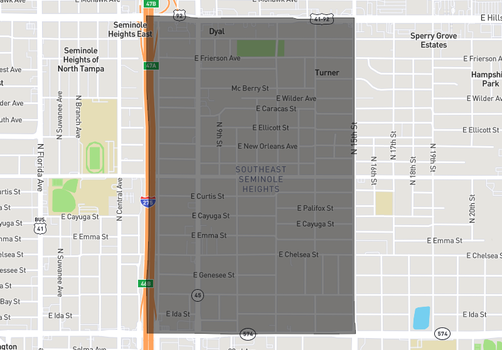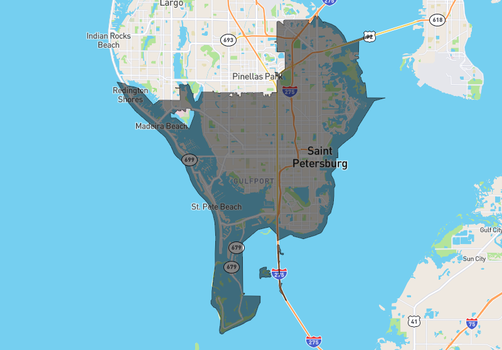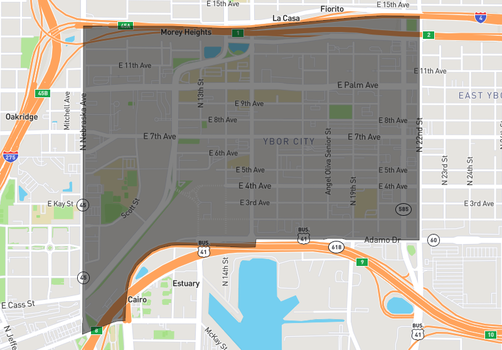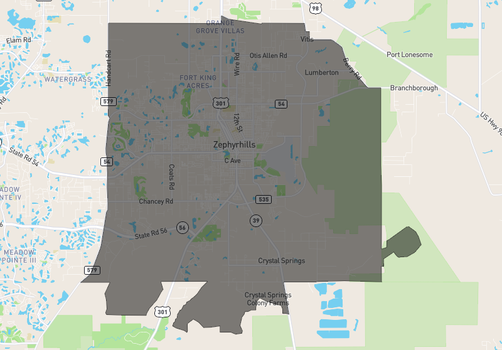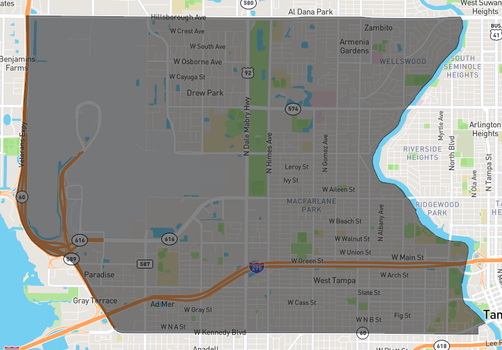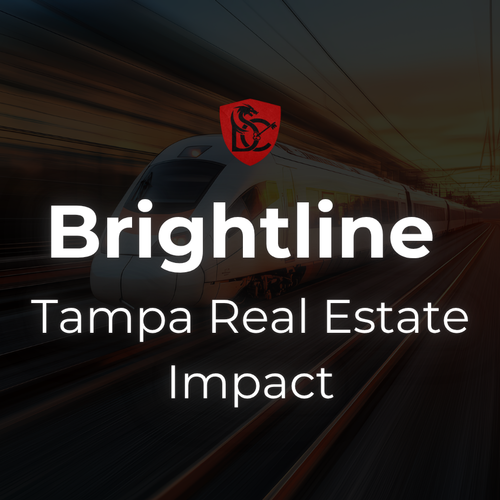Using the latest county stats for June–August and the big macro shifts (hello, Fed), here’s where Tampa/Hillsborough looks headed as we close out the year. The short version: more inventory than last year, slower sales, prices mostly flat, and slightly better affordability if rates keep easing.
Supply is up, sales are down
Single-family inventory is higher than last year and months’ supply is sitting around a balanced 4 months. In June, Hillsborough had 5,190 active single-family listings and 4.2 months of supply; July was similar at 5,095 and 4.2; August finished with 4,942 and 4.1 months. That’s more choice for buyers and less urgency than the frenzy days.
Closed sales softened through summer: 1,472 in June (+6.1% YoY), then 1,341 in July (-7.6% YoY), and 1,318 in August (-9.7% YoY). This tracks with what we’ve felt on the ground: activity peaked in early summer and cooled into late summer.
Statewide context backs this up too. Florida Realtors reported new pending sales for single-family homes rose 9.9% YoY in August statewide, a hopeful sign that cooler mortgage rates may be stirring demand a bit even as closed sales lag.
Takeaway: More listings and slower sales equal better selection. If you’re buying, you can take a breath and compare. If you’re selling, pricing and presentation matter again—buyers have options.
Prices are holding a line
Prices have been stable, not surging. The Hillsborough single-family median sale price came in at $440,000 in June (+1.1% YoY), $430,000 in July (flat YoY), and $423,450 in August (+0.8% YoY). The median percent of original list price received eased from 97.2% in June to 96.4% in July, signaling a bit more room to negotiate.
Average sale prices wandered a bit—down YoY in June and July, then up 5.3% YoY in August—likely a mix-shift effect rather than a clean read on appreciation. Month-to-month average swings happen when more (or fewer) higher-end closings hit in a given month, which is why I lean on the median for trend.
Condo watchers: across the U.S., Redfin data shows condo sellers outnumber buyers by a wide margin, and Tampa is on that list. If you’re condo-curious, there may be more leverage than on single-family.
Takeaway: Expect flat to modest price movement into year-end. Well-priced homes still move; stretched list prices sit.
More time to decide, but clean pricing wins
Homes are taking longer to snag a contract. Median time to contract rose from 28 days in June to 34 in July and 39 in August. Median time to sale ticked up from 70 to 76 to 78 days over the same stretch. Buyers have more time; sellers should plan for longer market and closing timelines.
Cash remains a steady slice of the market—~18–20% of single-family closings this summer—which helps some deals move even as financed buyers watch rates. June: 18.6% cash; July: 19.6%; August: 18.5%.
Takeaway: Days on market are back to normal. Price right from day one, aim for strong photos and turnkey condition, and expect negotiations to revolve around inspection items and rate-lock timing.
The swing factors into Q4: rates and insurance
The biggest change since mid-summer is macro. The Federal Reserve cut rates by 0.25% in September, and officials are now debating if more cuts are needed. That move has already nudged mortgage rates down. As of October 9, Freddie Mac’s weekly survey shows the 30-year fixed at 6.30%, the lowest level in about a year. If that holds or drifts lower, demand should perk up into the holidays.
Florida’s home insurance picture matters here too. The state is pushing Citizens policies back to private carriers (depopulation), and Citizens’ policy count has dropped below 800,000, down sharply from 2023 peaks. Regulators also say reinsurance costs look flat on average for 2025, which is a key input to premiums. That’s not instant relief for every homeowner—some Tampa Bay Citizens customers saw increases in June—but the trend is at least stabilizing instead of worsening.
What this means for buyers: If you’re waiting for a window, slightly lower rates plus more inventory is a better combo than we had last fall. Get insurance quotes early in your shopping process so you’re underwriting the full payment, not just principal and interest. Lock when a dip shows up; we’ve been hovering in a tight band.
What this means for sellers: The pool of buyers could grow if rates stay nearer 6% than 7%, but they’re choosy. Price where the comps justify, not where the wish list lands. Aim to be the best value in your micro-market rather than the highest priced lingerer.


